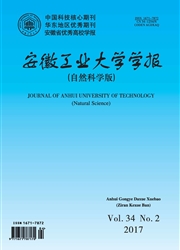

 中文摘要:
中文摘要:
建立风力机叶片气动模型、结构模型和有限元模型,以7个标准翼型的弦长、扭角、铺层数、铺层位置、腹板位置、主梁帽宽度等27个参数作为设计变量,综合考虑风力机叶片的气动与结构性能,以风力机叶片年发电量和质量为目标函数,考虑叶片强度、刚度、振动性等约束条件,建立风力机叶片多目标优化设计模型。运用竞争博弈决策方法对实际叶片算例进行求解,将叶片气动目标与结构目标作为两个博弈方,并通过模糊聚类将设计变量集合分割为各博弈方拥有的策略子空间,各博弈方以自身博弈得益函数为目标,在各自的策略子空间中进行优化,通过多轮博弈并根据收敛准则获得最终的博弈方案。结果表明,通过竞争博弈得到的叶片参数更为合理,不但减轻了叶片质量,而且增加了其年发电量,显示了方法的有效性。
 英文摘要:
英文摘要:
Aerodynamic model, structural model and finite element model of wind turbine blade were established.Taking 27 design parameters, including chord length and torsion angle of seven standard airfoils, layer number,layer location, location of shear web and width of spar cap etc, as design variables, and considering the aerodynamic and structural performance of wind turbine blade, a multi-objective optimization model of the wind turbine blade was built by taking annual energy production and mass of the blade as the objective functions, and taking strength,stiffness and stability constraints of the blade into account. Decision method of competition game was employed to solve the case of the actual blade example, where aerodynamic objective and structure objective were regarded as two game players, and fuzzy clustering was used to split the design variables set to the strategy subspace of each game player. Each player took its own profit function as mono-objective, and optimized it in each strategy subspace. According to convergence criterion, the final game equilibrium solution was obtained through multiround game. The results show that the blade parameters obtained by competition game are more reasonable, not only the blade mass is reduced, but also the annual energy production is increased, which demonstrates the effectiveness of this method.
 同期刊论文项目
同期刊论文项目
 同项目期刊论文
同项目期刊论文
 期刊信息
期刊信息
